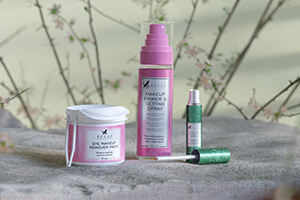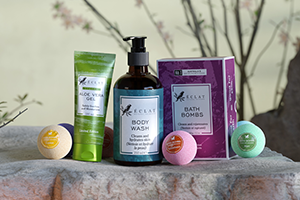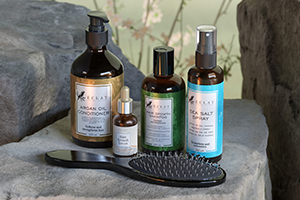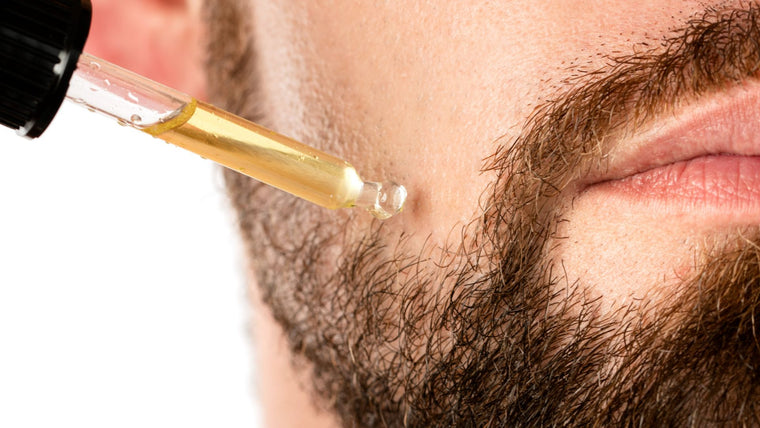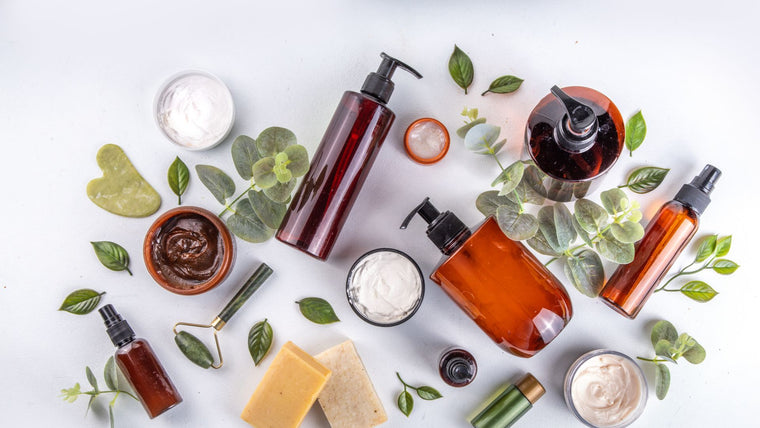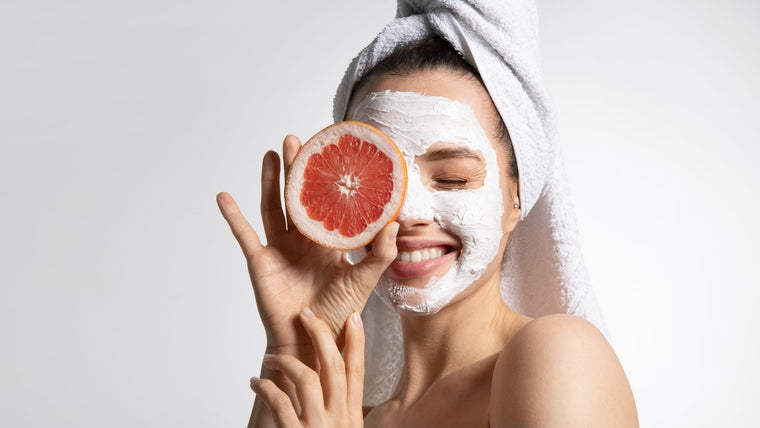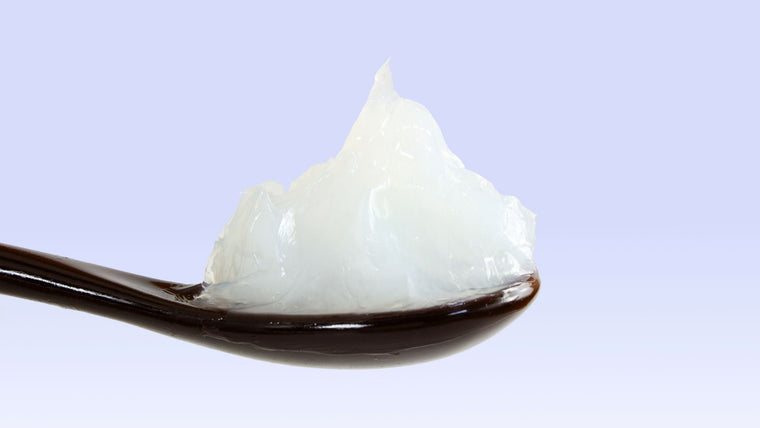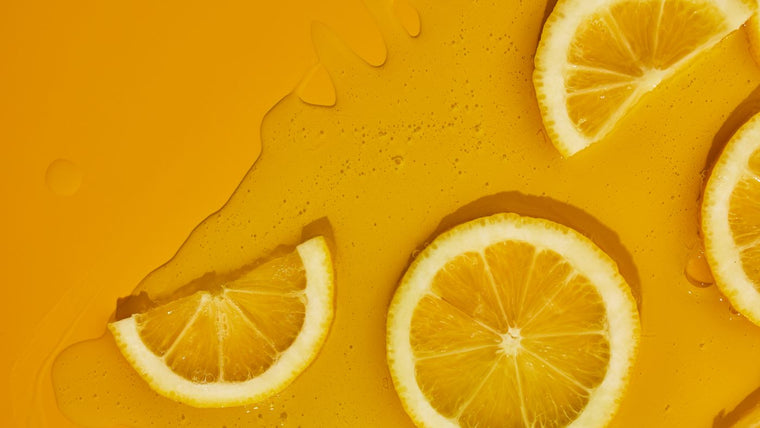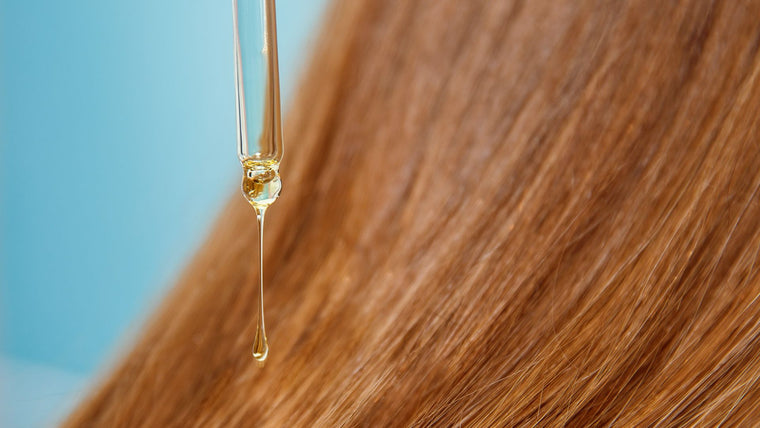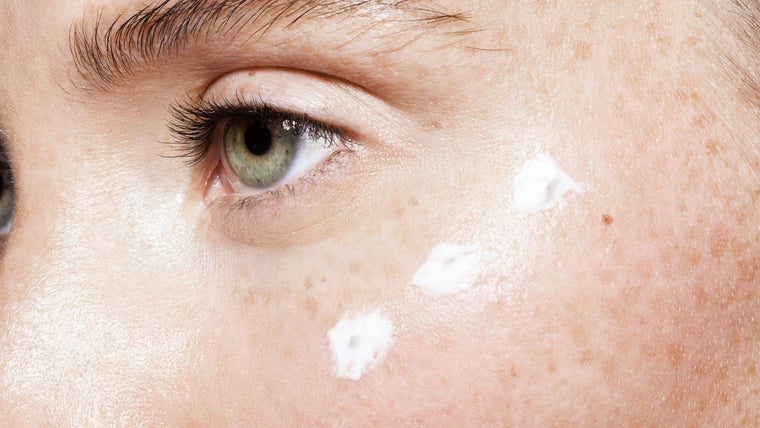A Complete Cheat Sheet to Skincare Direct Acids (and How to Use Them Effectively!)
- 11/11/2022
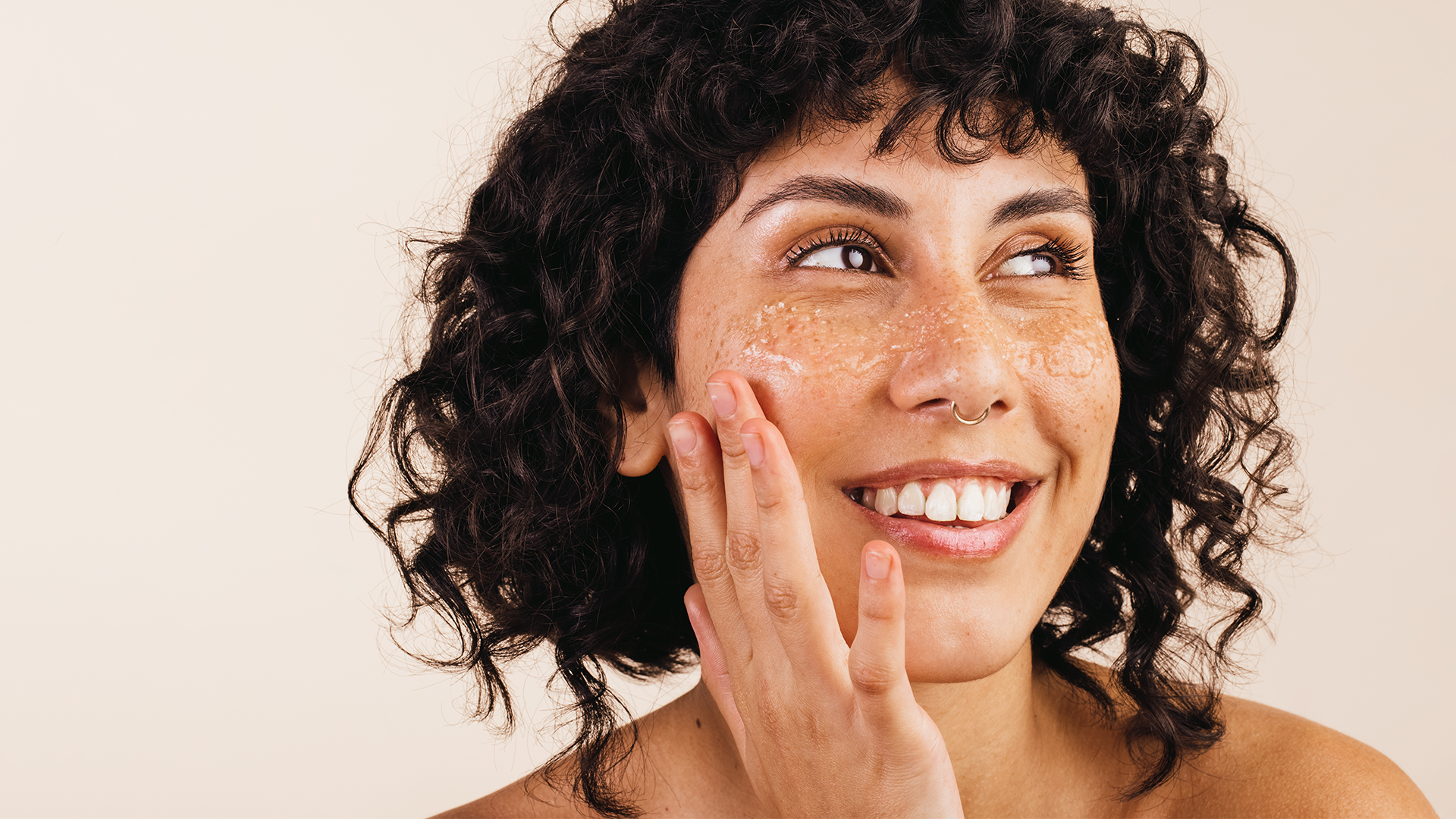
There's no ingredient more revered in the skincare world than the humble direct acid. Skincare experts and enthusiasts agree that direct acids are the bread and butter of healthy, dewy skin due to their seemingly never-ending benefits. Whether you have sensitive skin, acne-prone skin or something in between (we're looking at you, combination skin), there's a direct acid for you.
To any beauty newbies, acids can be daunting, and perhaps might even sound a bit dangerous. Surely putting acid on skin can't be good, right? While it may seem counter-intuitive, there's a lot more to direct acids than their name, and we promise they're not as scary as they sound.
So, what are direct acids, why are they so popular, and what can they do for your skin?
Decoding direct acids
Simply put, direct acids are a class of acids that are applied to skin to achieve a specific effect. And while there are many direct acids with different functions and benefits, there is one function that encompasses them all: exfoliation.
That's right—above all else, direct acids' primary task is to exfoliate skin. Specifically, they fall into the category of chemical exfoliation. There are two types of exfoliation in skin care: physical and chemical. While the latter can sound intimidating, it's actually more gentle and beneficial to skin, especially for those who are sensitive or blemish prone.
There are some major differences between these two types of exfoliation though, and one reigns supreme at shedding cells.
Physical exfoliation
Physical exfoliation is where dead skin is manually sloughed away, whether that's with a physical or textured ingredient, like walnut grains or microbeads, or with a washcloth, loofah or other skincare tool.
The problem with physical exfoliation is that it's easy to over-exfoliate. Physical ingredients like microbeads can cause microtears, disrupting the skin barrier and irritating it to a point where it becomes red and inflamed (we beg you, step away from that apricot face scrub).
Facial exfoliation requires finesse. That's why it's best to save the physical exfoliation for less sensitive parts of the body, like the arms, legs and chest, where skin is thicker and more resilient.
Chemical exfoliation
Unlike physical exfoliation, chemical exfoliation is achieved when ingredients like acids or enzymes loosen dead skin cells, dirt, and debris and lift them from the skin's surface.
Many professionals recommend chemical exfoliation for its additional skincare benefits and gentleness, touting it as one of the safest methods to brighten your complexion and fight skin fatigue. It's hard to dispute these statements once you dip your toe into the world of direct acids and see what they can do for you.
Now that we've covered some of the basics, it's time to delve into the differences between the 3 types of direct acids used in the cosmeceutical industry: AHAs, BHAs, and PHAs.
The A, B, Ps of hydroxy acids
AHAs, BHAs, and PHAs: Odds are you've heard your favorite skinfluencer use these acronyms, but what exactly do they stand for?
By definition, all direct acids are a type of hydroxy acid, and hydroxy acids (HAs) fall into three different camps: Alpha hydroxy acids, beta hydroxy acids, and poly hydroxy acids.

Alpha hydroxy acids
These types of HA are best for combating more visible skin concerns and signs of aging that affect the epidermis. Since they have water-soluble molecules, their exfoliating abilities shine when it comes to tackling hyperpigmentation, textural irregularities, dark spots, and even fine lines and wrinkles.
An alpha hydroxy acid is more powerful than a beta hydroxy acid, which is why it's important to approach them with care.
Dermatologists agree that alpha hydroxy acid concentrations in skincare products shouldn't exceed 10-15%. It's also important to limit sun exposure when you first start to use AHAs, and daily SPF application is a must since direct acids can increase sun sensitivity (why not try our SPF 50 Mineral Sunscreen?).
Beta hydroxy acids
When it comes to oily skin, clogged pores, and sun damage, beta hydroxy acids are your best port of call. Their oil-soluble molecules can go where other hydroxy acids can't, penetrating the deeper layers of skin. They're especially apt at tackling stubborn skin concerns like acne and sebum overproduction.
Although BHAs are considered the better choice for sensitive skin types, it's still important to use them in quantities that are suitable to your skin type. Even the gentlest beta hydroxy acid can create skin irritation if the concentration is high enough.
As we mentioned earlier, direct acids can increase sun sensitivity, so it's important to use daily SPF with BHAs as well, even if you're only using them in your nighttime routine.
Poly hydroxy acids
PHAs are the black sheep of the direct acid family. Their larger molecules can't penetrate as deeply or work as hard as AHAs and BHAs—in short, there are more effective HAs out there, so we recommend sticking to the beginning of the hydroxy acid alphabet.
Skincare acids
Now that we've covered everything you need to know about direct acids, let's dive into specific acids, their benefits and how they work.
Glycolic acid
What it is: Alpha hydroxy acid
Good for: Hyperpigmentation; Fine lines; Acne; Uneven tone
One of the most popular acids out there, glycolic acid is derived from sugar cane and has the smallest molecules of all AHAs, resulting in its impressive ability to sink into skin and exfoliate at a deeper level.
And while it's a great tool for fighting acne, it also has the ability to boost collagen production deep within the dermis. This acid has a higher likelihood of irritating sensitive skin types, so start low (percentage-wise) and take it slow.
Our Glycolic Acid Peel Pads are formulated at a science-backed 10% concentration to gently shed dead skin and encourage cell turnover. We've enriched our formula with vitamin E and aloe vera to soothe and nourish skin during exfoliation.
Mandelic acid
What it is: Alpha hydroxy acid
Good for: Dullness; Discoloration; Acne
One of the less common acids out there, mandelic acid is an ideal choice for sensitive skin types that need an efficient AHA. With larger molecules than glycolic acid, it penetrates skin at a slower rate for more gentle exfoliation. It's derived from bitter almonds and has natural anti-microbial compounds, so it's particularly adept at combating acne and improving skin texture.
Tartaric acid
What it is: Alpha hydroxy acid
Good for: Dullness; Photodamage; Dryness
Tartaric acid has been around for centuries, where it's primarily been used as a natural preservative in foods and cosmeceuticals, but it's only recently started to make a name for itself in the world of direct acids.
Technically an AHA, it doesn't have the conventional exfoliating abilities of other acids (although it does exfoliate). Instead, it's used to stabilize the pH of formulas that include more heavy-hitting AHAs. It's found mainly in grapes, and has hydrating and antioxidant properties that can help to combat dull skin and photoaging.
Lactic acid
What it is: Alpha hydroxy acid
Good for: Hyperpigmentation; Uneven texture; Age spots

Lactic acid is derived from, you guessed it, lactose! It's also found within sour milk. Although lactic acid has powerful exfoliating benefits, it's best known for its anti-aging effects on skin, like reducing uneven texture, fading age spots, and shrinking pore appearance.
Generally gentle on more resilient skin types, those with sensitivities should look for lactic acid concentrations of 5% or less to prevent redness or inflammation.
Salicylic acid
What it is: Beta hydroxy acid
Good for: Oiliness; Acne and breakouts; Pore size and clogged pores; Sebum and oil overproduction
The most popular BHA, salicylic acid is touted as one of the best solutions for congested pores and oily skin. At first glance, it doesn't make much sense to use an oil-soluble acid to combat oiliness and pore problems. Surely oil + oil = oil overload, right?
But oil-soluble ingredients like salicylic acid actually work best on clogged pores, as they rebalance skin and regulate its sebum production. SA is also a well-known solution for acne and stubborn blemishes, since it has natural antibacterial and anti-inflammatory properties.
Salicylic acid products come in a range of concentrations and form factors, so finding the right salicylic acid solution for you shouldn't be too challenging.
Our Salicylic Acid Cleanser features micronized molecules that penetrate deeper than traditional SA molecules for greater purifying and brightening benefits. Our salicylic acid is gentle too, so it's a great choice for skin that's easily irritated.
The non-acid acids
We've covered direct acids, but there's another class of skincare acid that doesn't fall into this camp: the non-acid acids. These are ingredients that are technically acids in the traditional sense, but their functions and benefits are different.
Ascorbic acid
What it is: Antioxidant
Good for: Dull skin; Photoaging and photodamage
Ascorbic acid, or l ascorbic acid, is just the fancy name for vitamin C. This antioxidant acid comes from citrus fruits (primarily oranges), although it can also be synthesized in a lab. It's one of the most potent antioxidants in the cosmeceutical industry due to its ability to reverse signs of photoaging and protect against photodamage caused by UV rays and free radicals.

It also has powerful exfoliating and skin-illuminating properties, which is why you'll likely see it in brightening serums and creams.
Our Vitamin C Serum boasts an impressive 20% concentration. It's formulated with super soothers and hydrators like aloe vera, hyaluronic acid, and jojoba oil to calm inflammation (perfect for sensitive skin!). Our formula reaches deep within the dermis for quick rejuvenation and restoration.
Remember to always wear SPF while using this antioxidant as, like its direct acid counterparts, it can increase sun sensitivity.
Ferulic acid
What it is: Antioxidant
Good for: Ingredient stability; Photodamage and photoaging
Found naturally in many grains, fruits and vegetables, this "acid" is actually an antioxidant, similar in function to vitamin C but not as strong. In fact, it's considered more of a sidekick than a main character in the beauty industry, since its primary function is to boost the stability of antioxidants and actives.
It increases the effectiveness and shelf life of other ingredients, which is why you're likely to find it in the INCI lists of your most-loved products. You'll spot it in most of our formulas, too, including in our bestselling serums and creams.
Oleic acid
What it is: Fatty acid
Good for: Dryness and dehydration
Oleic acid isn't your traditional acid—it's a fatty acid that's found naturally in skin, but it's also in many fruits and vegetables, most notably vegetable oils. These include oils like jojoba, coconut, olive—pretty much any vegetable oil out there.
Oleic acid is a super-nourishing hydrator. It's able to "feed" the skin's lipids and repair its delicate barrier.
Hyaluronic acid
What it is: Humectant
Good for: Dryness and dehydration; Barrier restoration and repair; Fine lines and wrinkles
HA isn't actually an acid at all, but a humectant! It occurs naturally in the body, but can be depleted due to a slew of factors, like living in a humid climate or not drinking enough water.
Hyaluronic acid can hold 1,000 times its weight in water and works by pulling moisture from the air to the skin's surface, thereby pulling it down to the dermis for deep hydration. It can plump skin and fill deep-set fine lines, which is why it's one of the most popular hydrators out there.

Éclat Hyaluronic Acid Serum features 3 different HA molecule sizes (yes, that's a thing!) that penetrate the skin at different levels for unrivaled hydration and moisture binding. Or, if rich textures are your thing, give our Hyaluronic Acid Cream a try. Its added antioxidants and fatty acids are sure to leave skin feeling baby soft.


